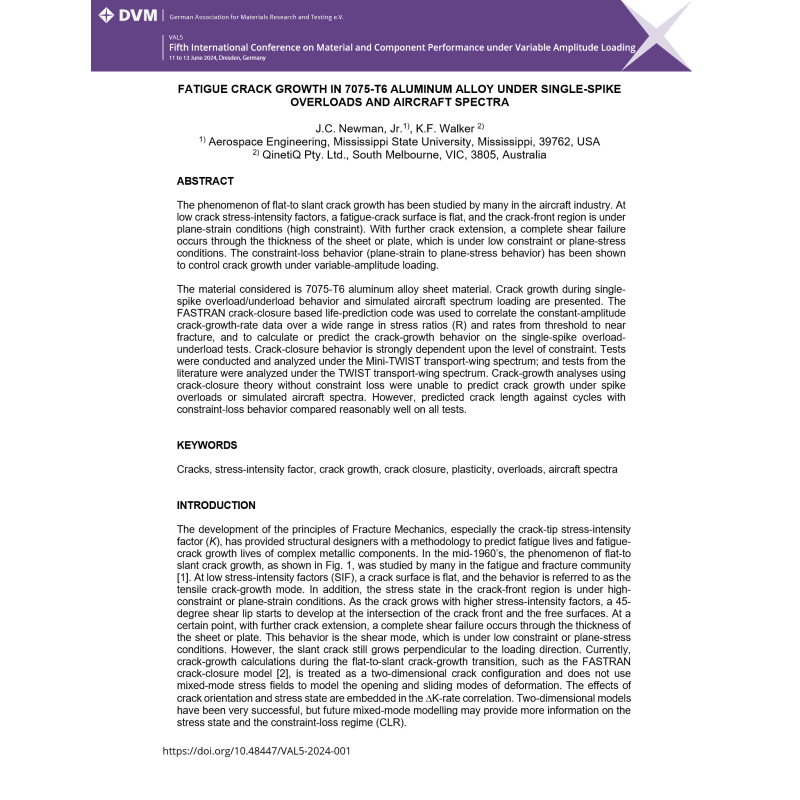- Online only



In the mid-1960’s, the phenomenon of flat-to slant crack growth was studied by many in the aircraft industry. At low stress-intensity factors, a fatigue-crack surface is flat (tensile mode) and the crack-front region is under plane-strain conditions (high constraint). As the crack grows with higher stress-intensity factors, a 45-degree shear lip starts to develop at the intersection of the crack front and free surfaces. With further crack extension, a complete shear failure occurs through the thickness of the sheet or plate. This behavior is the shear mode, which is under low constraint or plane-stress conditions. In 1966, Schijve found that the transition from flat-to-slant crack growth on a 2024-T3 aluminum alloy over a wide range in stress ratios (R) occurred at a constant…

Datenschutzbedingungen (bearbeiten im Modul "Kundenvorteile")

Lieferbedingungen (bearbeiten im Modul "Kundenvorteile")

Rücksendebedingungen (bearbeiten im Modul "Kundenvorteile")
In the mid-1960’s, the phenomenon of flat-to slant crack growth was studied by many in the aircraft industry. At low stress-intensity factors, a fatigue-crack surface is flat (tensile mode) and the crack-front region is under plane-strain conditions (high constraint). As the crack grows with higher stress-intensity factors, a 45-degree shear lip starts to develop at the intersection of the crack front and free surfaces. With further crack extension, a complete shear failure occurs through the thickness of the sheet or plate. This behavior is the shear mode, which is under low constraint or plane-stress conditions. In 1966, Schijve found that the transition from flat-to-slant crack growth on a 2024-T3 aluminum alloy over a wide range in stress ratios (R) occurred at a constant crack-growth rate. Newman and Hudson showed the same behavior on 7075-T6 and Ti-8Al-1Mo-1V alloys, validating Schijve’s observation that the crack-growth rate was the key parameter for flat-to-slant crack-growth behavior.
The material considered herein is 7075-T6 aluminum alloy sheet material. Crack growth during single-spike overload-underload behavior and simulated aircraft spectrum loading are presented. The FASTRAN crack-closure based life-prediction code was used to correlate the constant-amplitude crack-growth-rate data over a wide range in stress ratios (R) and rates from threshold to near fracture, and to calculate or predict the crack-growth behavior on the single-spike overload-underload tests. Crack-closure behavior is strongly dependent upon the level of constraint. The main objective was to see if the constraint-loss region (flat-to-slant crack growth) is the primary reason for crack-growth delays after single-spike overloads. Tests were also conducted under the Mini-TWIST (standard European) transport wing spectrum. Crack-growth analyses using crack-closure theory without constraint loss were unable to predict crack growth under spike overloads or simulated aircraft spectra. However, predicted crack length against cycles with constraint-loss behavior compared reasonably well on all tests.